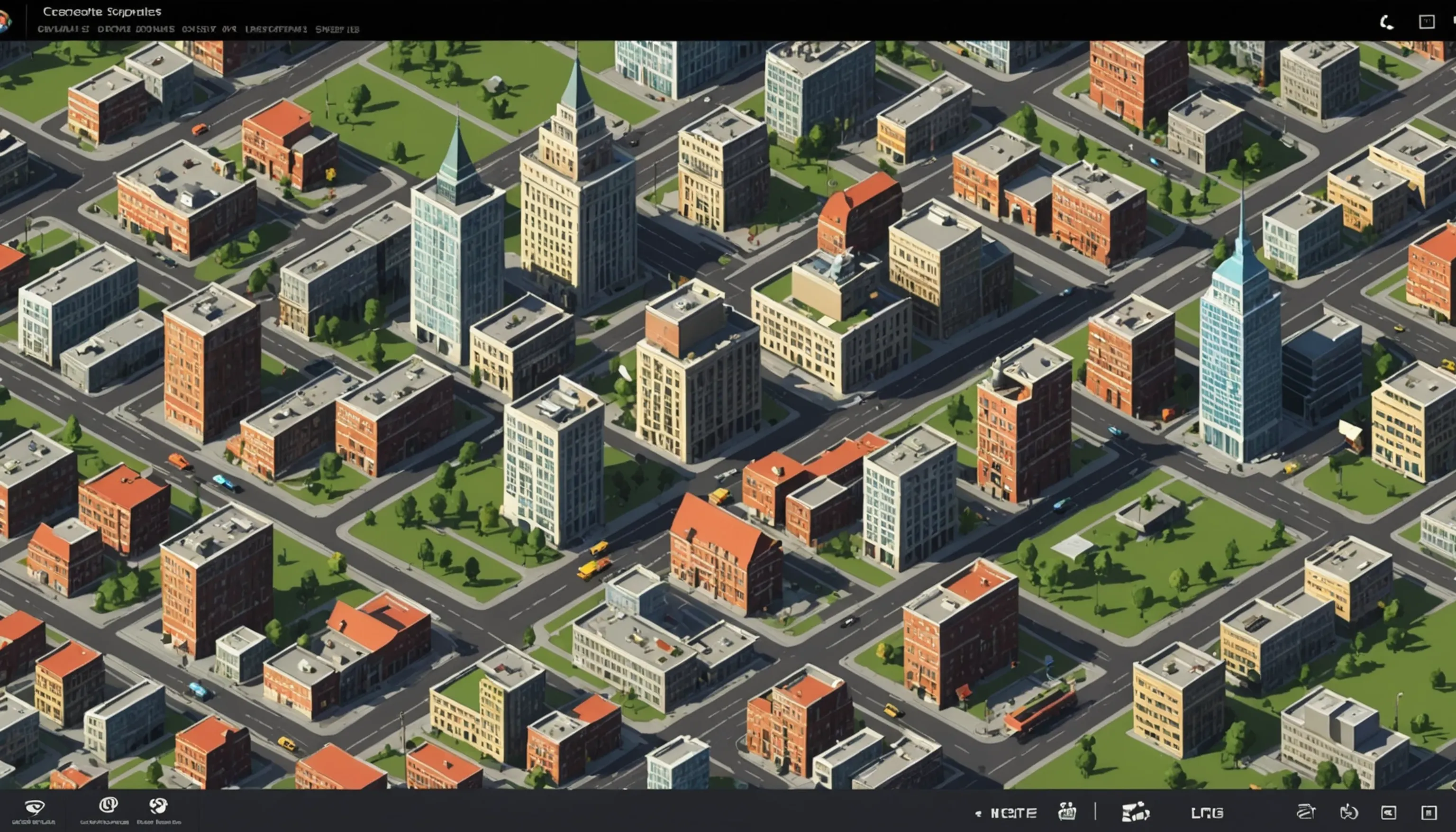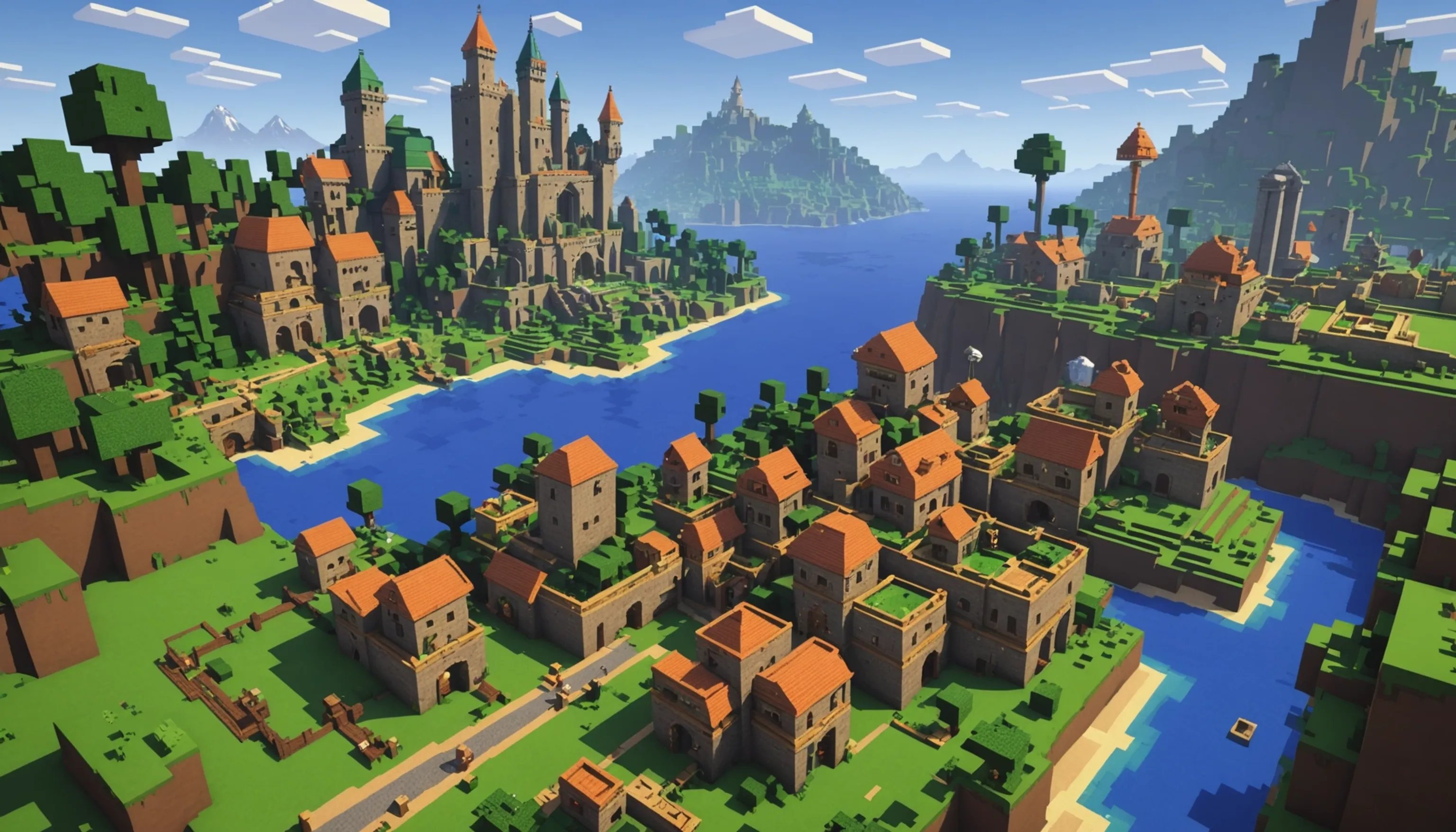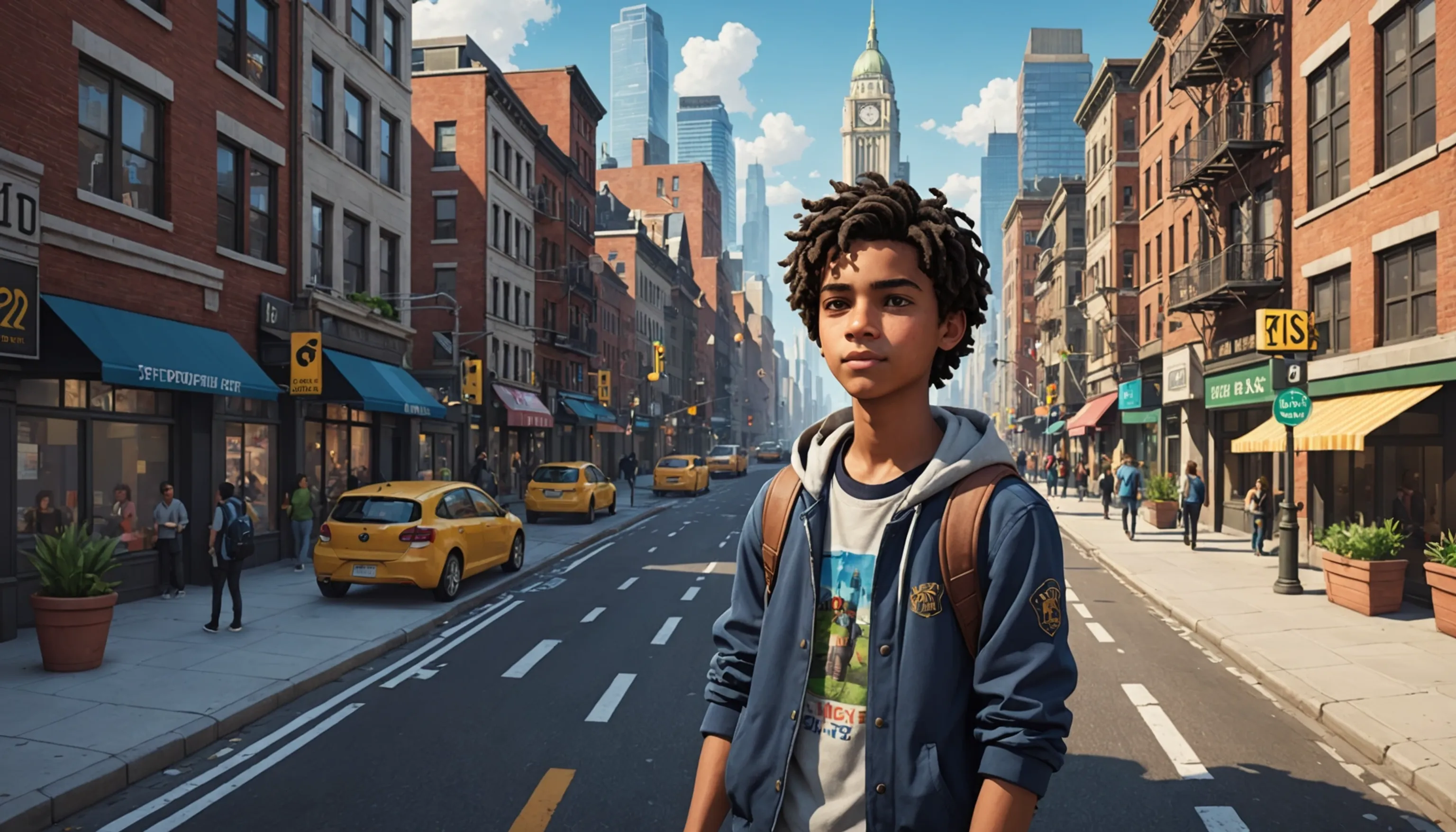Games Similar to Cities: Skylines
 HvWHenry van Wagenberg
HvWHenry van Wagenberg
Games Similar to Cities: Skylines for Creative Planning
If you're looking for games similar to Cities: Skylines that encourage creative planning, there are several great options available. These games not only allow players to build and manage their own cities but also challenge them to think strategically.
Titles like SimCity and Anno 1800 offer rich city-building experiences with intricate mechanics. Additionally, Planet Coaster allows for creativity in designing theme parks, while Parkitect emphasizes management and planning. These games help foster critical thinking and problem-solving skills, making them perfect for aspiring urban planners.
Top City-Building Games
City-building games offer players the chance to create and manage their own urban environments, fostering creativity and strategic thinking. Here are some of the top city-building games that share similarities with Cities: Skylines:
- SimCity (2013): A classic in the genre, this game allows players to design and manage a city, balancing the needs of citizens with the challenges of urban development.
- Anno 1800: Set during the Industrial Revolution, Anno 1800 combines city-building with resource management. Players must build cities while managing trade routes and production chains.
- Banished: This game focuses on survival and resource management, where players guide a group of exiled travelers to build a new settlement while ensuring their survival.
- Planet Coaster: While primarily a theme park simulation, this game allows players to design and manage their own amusement parks with intricate detail, making it a fun alternative for creative minds.
- Farming Simulator 19: Blending city-building with farming elements, players can create their own agricultural empire while managing resources and logistics.
These games not only provide entertainment but also enhance important skills such as strategic planning, resource management, and creative problem-solving. They can serve as valuable tools for parents and teachers looking to engage teenagers in learning through play.
Simulation Games with City Elements
Simulation games with city elements provide players with a unique blend of creativity and strategic management. These games often allow players to build and manage urban environments while incorporating various life simulation aspects. Here are some notable titles to consider:
- SimCity BuildIt: A mobile version of the classic franchise, SimCity BuildIt lets players construct their own city on the go. It features resource management, trade, and the challenge of meeting the needs of virtual citizens.
- Cities in Motion 2: This game focuses on public transportation and urban planning. Players must create efficient transit systems that cater to the needs of the city’s inhabitants, enhancing their overall experience.
- Farming Simulator 22: While primarily focused on agriculture, this game incorporates city-building elements, allowing players to manage farms and rural areas while improving local infrastructure.
- Oxygen Not Included: A space-colony simulation game, Oxygen Not Included challenges players to build and manage an underground base. It combines resource management with city-building mechanics, emphasizing sustainability.
- Farming Simulator 19: Merging farming with city management, this game allows players to build agricultural businesses while developing surrounding towns.
These simulation games not only enhance creativity but also foster critical thinking and planning skills. They are perfect for parents and teachers looking to engage teenagers in educational yet enjoyable gameplay.

Sandbox Games for Creative Freedom
Sandbox games offer players the ultimate creative freedom to build and explore without the constraints often found in traditional city-building games. These games allow for unrestricted creativity, letting players design their worlds as they see fit. Here are some standout sandbox games that incorporate city-building elements:
- Minecraft: Perhaps the most famous sandbox game, Minecraft allows players to construct anything from simple homes to elaborate cities using blocks. With various modes, including survival and creative, players can explore, mine, and build to their heart's content.
- Terraria: This 2D sandbox game combines adventure and building, allowing players to create intricate structures while battling monsters and exploring vast underground worlds. Its crafting system adds depth to the building experience.
- Garry's Mod: A sandbox game using the Source engine, Garry's Mod allows players to manipulate objects and experiment within various game environments. Players can create their own game modes, including city simulations.
- Planet Coaster: While primarily a theme park simulation, Planet Coaster offers sandbox mode, where players can build their amusement parks without limitations, using a vast array of tools to customize rides and landscapes.
- Roblox: This platform allows users to create their games and experiences, including city-building simulations. Players can explore various user-generated worlds, providing endless creative possibilities.
Sandbox games not only encourage creativity but also promote problem-solving skills, making them excellent choices for parents and teachers aiming to engage teenagers in imaginative play.
Educational Benefits of City-Building Games
City-building games offer numerous educational benefits that can enhance learning for teenagers. These games promote strategic thinking as players must plan and manage resources effectively to build successful cities. They also foster creativity by allowing players to design unique environments and solve complex problems. Additionally, city-building games teach essential concepts of urban planning and resource management, providing insights into how cities function. Furthermore, these games often require collaboration and communication skills when working in team settings, making them valuable tools for educators and parents seeking engaging learning experiences.
Enhancing Strategic Thinking Skills
City-building games are exceptional tools for enhancing strategic thinking skills among teenagers. These games immerse players in scenarios that require them to make critical decisions while managing various resources. As they build and expand their cities, players must consider multiple factors, such as budget constraints, population needs, and environmental impacts.
For instance, in games like Cities: Skylines or SimCity, players must balance the allocation of funds between infrastructure, public services, and recreational spaces. This necessitates an understanding of trade-offs and the ability to anticipate the consequences of their decisions. Players learn to prioritize tasks and manage time efficiently, as they must respond to challenges like traffic congestion or public health crises.
Moreover, these games often present players with unexpected events, such as natural disasters or economic downturns, requiring quick thinking and adaptive strategies. This aspect of gameplay fosters resilience and flexibility, encouraging players to adjust their plans dynamically.
Additionally, city-building games encourage players to think long-term. They must consider not only immediate needs but also the sustainability of their city over time, teaching them to plan for the future. By engaging with these challenges, teenagers enhance their ability to analyze situations, evaluate options, and develop effective strategies, all of which are crucial skills for academic and real-world success.

Promoting Creativity and Imagination
City-building games are powerful tools for promoting creativity and imagination in teenagers. These games provide a vast canvas where players can unleash their creativity by designing intricate cities, neighborhoods, and landscapes. Unlike linear games, city-building simulations encourage players to experiment with different styles, layouts, and themes, allowing them to express their unique artistic visions.
In games like Cities: Skylines and Planet Coaster, players have access to a plethora of customization options. They can choose architectural styles, select colors, and arrange buildings and parks in visually appealing ways. This freedom fosters a sense of ownership and pride in their creations, encouraging players to think outside the box and push the boundaries of their imagination.
Additionally, the open-ended nature of these games allows for storytelling and world-building. Players often create backstories for their cities, imagining the lives of the inhabitants and the history behind their structures. This narrative element enhances their engagement and inspires them to create more complex and detailed environments.
City-building games also serve as a springboard for exploring real-world concepts such as urban planning, environmental sustainability, and architecture. As players build their cities, they can incorporate elements of green spaces, public transportation, and community services, all of which require creative problem-solving.
In summary, city-building games not only entertain but also nurture creativity and imagination, making them excellent educational tools for parents and teachers looking to engage teenagers in imaginative play.
Understanding Urban Planning Concepts
City-building games serve as an engaging platform for understanding urban planning concepts, making them valuable educational tools for teenagers. These games simulate real-world scenarios where players are tasked with designing and managing cities, which inherently involves grasping various principles of urban planning.
In games like Cities: Skylines and SimCity, players learn about zoning laws, land use, and the importance of balancing residential, commercial, and industrial areas. They must consider how different zones interact with each other, which is crucial for creating a functional city layout. Understanding these concepts helps players appreciate the complexities involved in real urban planning.
Moreover, players are introduced to essential elements such as public transportation systems, parks, and public services. They learn how these components influence the quality of life for residents and the overall functionality of a city. For instance, they must strategically place schools, hospitals, and fire stations to ensure accessibility and efficiency.
Additionally, players encounter challenges like traffic congestion, pollution, and resource management, prompting them to think critically about sustainable practices. By addressing these issues, they gain insights into how urban planners must balance growth with environmental and social considerations.
Ultimately, city-building games not only entertain but also cultivate a deeper understanding of urban planning concepts. They encourage players to think critically about how cities are structured and the various factors that contribute to their success or failure, providing a solid foundation for future learning in this field.
How to Choose the Right Game
Choosing the right city-building game for teenagers involves considering several factors. First, assess the age appropriateness of the game to ensure it aligns with the player's maturity level. Look for games that offer a balance between fun and educational content, promoting strategic thinking and creativity.
Next, evaluate the game's complexity and learning curve. Some games, like Cities: Skylines, may require more advanced skills, while others like SimCity BuildIt are more accessible. Finally, consider the player's interests—whether they prefer realistic simulations or more whimsical, creative experiences—to find a game that keeps them engaged and excited to play.
Age Appropriateness of Games
When selecting city-building games for teenagers, age appropriateness is a crucial factor to consider. Different games cater to various age groups, and understanding these classifications can help parents and educators make informed choices. Most games in this genre include content ratings, often provided by organizations such as the Entertainment Software Rating Board (ESRB) or Pan European Game Information (PEGI).
For younger teens, games like SimCity BuildIt or Minecraft are ideal. These games offer engaging gameplay without violent content and are designed to encourage creativity and problem-solving skills. They allow players to build and explore in a safe environment, making them suitable for ages 10 and up.
As teenagers mature, they might seek more complex games like Cities: Skylines or Anno 1800. These titles involve deeper strategic elements, resource management, and intricate mechanics, challenging players to think critically and plan effectively. While they are still appropriate for teens, players should be prepared for a steeper learning curve.
It's also essential to consider the social aspects of gaming. Some titles allow online interactions, which can expose players to both positive and negative experiences. Parents should monitor online play and encourage discussions about safety and respectful communication. Additionally, discussing the themes and challenges presented in these games can enhance the learning experience and ensure that the content aligns with family values.
In summary, selecting age-appropriate city-building games fosters a safe, educational, and enjoyable gaming environment for teenagers, promoting their development and engagement.
Game Complexity and Learning Curve
When choosing a city-building game for teenagers, understanding the complexity and learning curve is essential for ensuring an enjoyable and educational experience. Different games cater to varying skill levels, and recognizing these differences can help players engage effectively without becoming frustrated.
For younger players or those new to the genre, simpler games like SimCity BuildIt or Cities: Skylines offer intuitive interfaces and straightforward mechanics. These games introduce core concepts of city-building without overwhelming players with too many options. The learning curve is gentle, allowing players to gradually grasp key elements such as resource management, zoning, and infrastructure development.
As players become more confident, they may wish to explore more complex titles. Games like Anno 1800 and Cities: Skylines provide depth with intricate mechanics involving trade, economic systems, and detailed urban planning. While these games offer richer experiences, they also require players to invest time in learning various systems, which can lead to a steeper learning curve.
To support this process, many games include tutorials and in-game tips that guide players through the learning journey. Additionally, engaging with online communities or watching gameplay videos can provide valuable insights and strategies that enhance understanding.
Ultimately, selecting a game that matches the player's skill level while offering opportunities for growth is key. A well-chosen game can encourage critical thinking, creativity, and problem-solving skills, making the gaming experience both enjoyable and educational.
